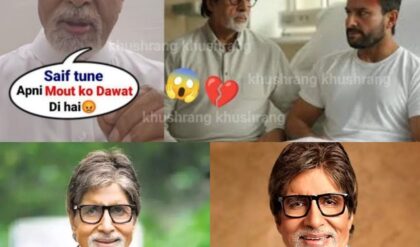In a Shah Rukh Khan film, a brand synonymous with over-the-top declarations of love, this no-frills declaration is an anomaly.

Stills from Swades Photo: Swades
In the 157th minute of Ashutosh Gowariker’s Swades (2004), something peculiar happens. Gita (Gayatri Joshi) walks up to Mohan (Shah Rukh Khan) as he’s working. She calls out to him, but he barely registers. So, she leans into his RV, her gaze fixed, as she says, ‘Mohan, I think I’ve fallen in love with you.’ Mohan nods and smiles vacantly, only realising what she’s saying a moment later.
In a Shah Rukh Khan film, a brand synonymous with over-the-top declarations of (sometimes problematic) love, this no-frills declaration is an anomaly. There’s no swelling background music, no close-up of him slowly turning his head, no magical transportation of the lovers to a mustard field. Never has a moment been so bare, bereft of paraphernalia, like in this 2004 film. The scene rests entirely on Joshi’s smitten eyes, and the timing between the two actors. Mohan asks Gita to repeat herself, as her coy smile makes way for the lilting notes of a love ballad. Just like the love story in the film, Dekho Na, a superbly reined-in song about the giddiness of new-found love, isn’t spoken of as much as it should be.
Brought up each time Khan’s merit as an actor is being discussed, Swades is a fine example of an ‘issues-driven’ film that stays within the realm of ‘entertaining’. Despite none of the tics, or gimmicks from its lead actor.
In a film industry shaped by Khan’s extravagant, shot-in-Europe romances, where repeatedly crossing boundaries with a woman is deemed ‘harmless flirting’ (hello there, DDLJ), the love story of Swades barely even registered.
So big was the cloud of Gowariker’s film being the most ‘important’ in Khan’s filmography, that it cast a shadow on what is arguably the most unpretentious love story of his career.
With many highlights, here are four scenes to demonstrate why Gowariker’s film might be Khan’s warmest, most charming and mature love story on screen.
The Meet-Cute
For a film dismissed as a ‘boring lecture’, it’s amusing that when Mohan first meets Gita at a bookstore, she’s lecturing a stranger for being disrespectful towards books. At the very outset, Mohan seems quite taken in by Gita’s idealism. Gowariker’s spin on the manic-pixie dream girl, who is armed with wry rebuttals and won’t suffer stupidity without reason, is charming to say the least.
By first besting Mohan and his calculator at the cash counter, and then showing him the way to the little-known hamlet, Charanpur, Gita leaves Mohan stumped. It’s a smartly executed meet-cute, full of one-liners that sound endearing only when Shah Rukh Khan says them.

Still from Swades Photo: Swades
No Smoking
Swades is that rare film where Khan’s smoking is not a substitute for personality. In fact, it’s used to make him look all the more ordinary. But, out of respect, Mohan never smokes in front of Kaveri Amma. In fact, when Kaveri Amma surprises him by visiting his RV all of a sudden, Mohan is almost embarrassed that he might get caught with a pack of cigarettes at his workstation.
This prompts a sweet moment between Mohan and Gita, where he signals her to help him hide it before Kaveri Amma spots it. With a disapproval in her eyes, she relents.
The smoking comes up again, in Dekho Na. By now Gita and Mohan are in love, and she frowns when he lights up a cigarette. One look at Gita’s stern expression, and he takes one final drag and flicks the cigarette away, watching her mood lighten. It’s a gloriously understated moment, consistent with the film’s minimalist style.

Stills from Swades Photo: Swades
Mohan and Gita’s sexual tension
In spite of its ‘family film’ aesthetic, Gowariker never tries to sanitise Mohan and Gita’s budding romance by ignoring their sexual tension. Of similar age and upbringing, Mohan and Gita understand each other better than anyone else in the village. After some sweet confrontations, Mohan and Gita are finally getting along. Feelings are being felt by the two (relatively) young adults of Charanpur.
And then comes Zeenat Aman.
The entire village is watching Yaadon Ki Baraat, widely considered one of the earliest masala films. And Gowariker delivers his own ‘masala moment’ in the way Mohan and Gita steal glances at each other, as Asha Bhosle sings Chura Liya Hai Tumne on screen.

Still from Swades Photo: Swades
This spark only compounds further, when Mohan attends Gita’s ‘General Knowledge’ class. Intentionally making a fool of himself in front of the kids, only after everyone leaves does he reveal some nerdy trivia about the questions he’d earlier got ‘wrong’. Gita, having embarrassed him in front of everyone, avoids eye-contact, by now aware why he did it, and who he was trying to impress.

Still from Swades Photo: Swades
And in case you weren’t positively aware of the palpable sexual tension by now, then comes the scene before Dussehra. Mohan wants to wear a dhoti, but doesn’t know how. Instead of Kaveri Amma, it is Gita who comes to his aid. Mohan, despite reservations about Gita’s skills, is asked to stand quietly and follow instructions. This scene, where Gita neatly folds the pleats of his dhoti, getting closer to him one pleat at a time, could have easily gone awry. But it doesn’t.
Gita’s poise in this scene, feels like payback for an entire generation of women, whose twirling sarees have been used as props for titillation in Hindi cinema. A special word for Rahman’s background score (which is sensational throughout) in this scene, where he uses a tabla beat to underline the naughty undertones, as Mohan stands around, blushing.

Still from Swades Photo: Swades
The Inconvenient Climax
As the Sarpanch of Charanpur tells Mohan towards the end of the film, “Hum tohbhool hi gaye the ki aapmehmaanhai, aur mehmaantohjaanekeliye hi aatehai.” Coming to its logical end, the love story is cut short.
Even though he doesn’t harp about it, Gowariker’s love story is that of equals. So, while Mohan has his priorities to return to, so does Gita. She unequivocally announces her desire to marry him, but she won’t settle abroad. This is a full decade before Hindi cinema began treating women empowerment as a punchline.

Swades Photo: Still from Swades
Gita doesn’t try to stop him, but she is optimistic he will return. She gifts him a miniature box of spices, herbs, grains, one which she hopes will make Mohan miss home. The resolution here isn’t convenient, like in most Hindi films. Unlike most films where one character would make a sacrifice and signal a sudden change of heart, that invariably feels rushed to carry the film to its happy conclusion, Gowariker puts his trust in time and hindsight. He believes both his characters can make difficult choices without letting go of their basic principles. That is where lies the biggest strength of this love story. It doesn’t romanticise compromise.
In retrospect, it’s amusing how Shah Rukh Khan’s most “socially conscious film” also held within it, his most sincere and tender love story. History might only remember the boisterous version of Khan’s lover boy of the 90s, but it is this film that arguably justifies his moniker: The King of Romance. A love story about a couple who engage beyond not only looks, but with each other’s belief systems and world views. The beauty lies in the way Joshi’s character chooses to showcase her interest in Khan’s character, by helping him multiply 23.3 with 33.9. And how Khan’s character folds his hands after she beats his calculator (again!).





